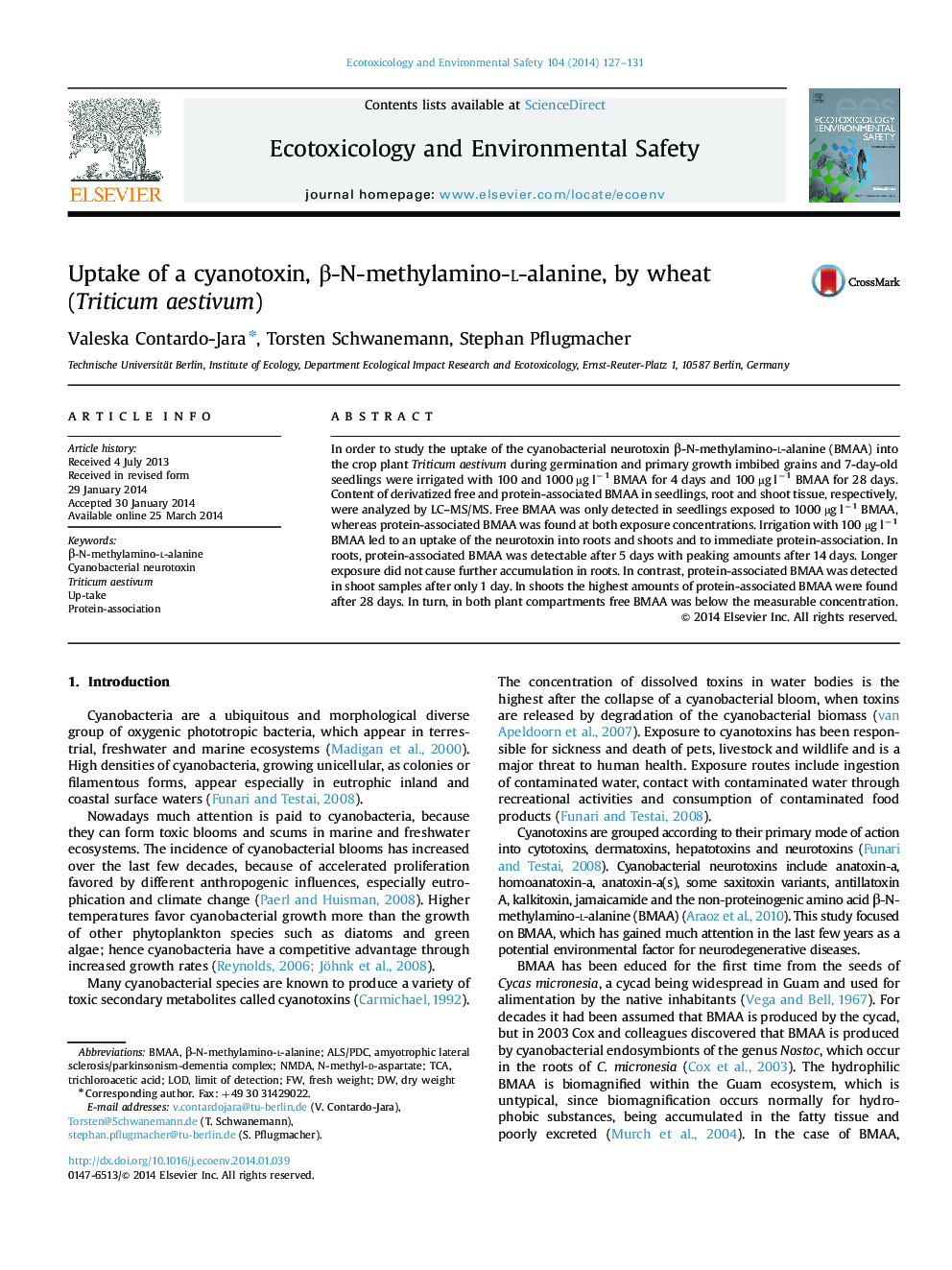| Article ID | Journal | Published Year | Pages | File Type |
|---|---|---|---|---|
| 4420155 | Ecotoxicology and Environmental Safety | 2014 | 5 Pages |
•Immediate uptake and protein-association of BMAA in wheat after spray irrigation.•Varying amounts of protein-associated BMAA in root and shoot samples.•Putative BMAA binding to receptor molecules as an explanation of absent free BMAA.
In order to study the uptake of the cyanobacterial neurotoxin β-N-methylamino-l-alanine (BMAA) into the crop plant Triticum aestivum during germination and primary growth imbibed grains and 7-day-old seedlings were irrigated with 100 and 1000 µg l−1 BMAA for 4 days and 100 µg l−1 BMAA for 28 days. Content of derivatized free and protein-associated BMAA in seedlings, root and shoot tissue, respectively, were analyzed by LC–MS/MS. Free BMAA was only detected in seedlings exposed to 1000 µg l−1 BMAA, whereas protein-associated BMAA was found at both exposure concentrations. Irrigation with 100 µg l−1 BMAA led to an uptake of the neurotoxin into roots and shoots and to immediate protein-association. In roots, protein-associated BMAA was detectable after 5 days with peaking amounts after 14 days. Longer exposure did not cause further accumulation in roots. In contrast, protein-associated BMAA was detected in shoot samples after only 1 day. In shoots the highest amounts of protein-associated BMAA were found after 28 days. In turn, in both plant compartments free BMAA was below the measurable concentration.
